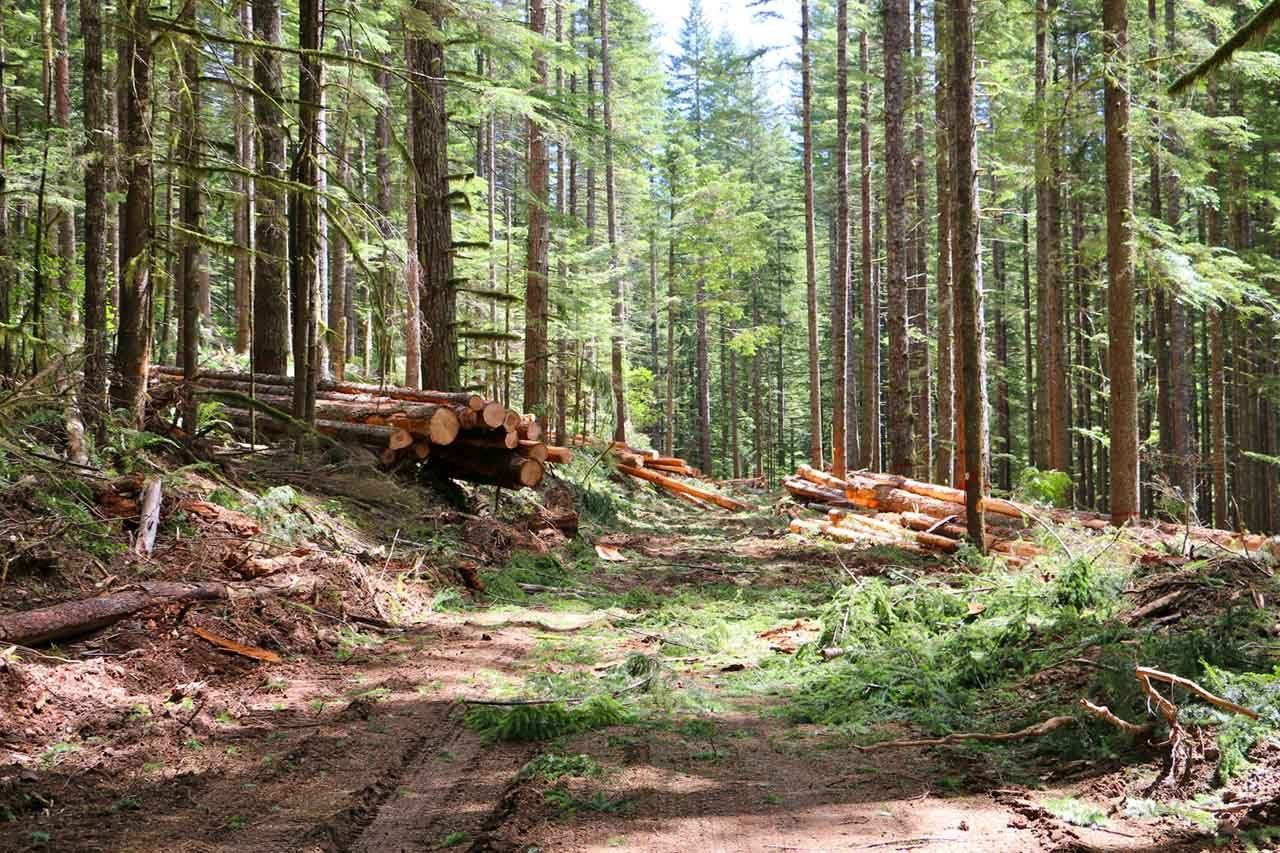Are Southern Oregon Trees To Be Auctioned By Feds Healthy Or Dead?

JOSEPHINE COUNTY, Ore — Almost 500 acres of forestland in the Applegate Valley are set to be auctioned by the federal Bureau of Land Management (BLM) on Thursday.
The auction is intended as a plan to log dead or dying trees but a conservationist believes many of the trees are actually healthy.
Controversial Timber Auction In The Applegate Valley
Douglas fir trees affected by recent outbreaks of invasive beetles and drought have been earmarked for auction at the Boaz and Forest Creek timber auctions in the Applegate Valley.
To log dead or dying trees, the federal BLM plans to auction off almost 500 acres of forestland on Thursday. The Medford division of BLM said the criteria used to mark trees for removal was developed with Oregon State University scientists to identify which trees are dead or dying.
Conservationist Luke Ruediger who is the executive director of the Applegate Siskiyou Alliance said several of the proposed logging areas don’t meet the BLM’s criteria for dead and dying trees.
He said the BLM is manipulating public concern around beetles to implement clearcut logging in stands that have previously been opposed by the public. Some of these areas were part of the 2016 Nedsbar timber sale shelved by the BLM after no bids were received.
Ruediger said the effects of climate change and increasing wildfire risk will be negatively impacted by BLM’s aggressive logging in these areas by creating open fields of dry, flammable brush that will grow in place of the trees.
Kyle Sullivan, Medford BLM’s spokesperson, said rather than cut down trees that have already died, it’s more efficient to cut down all the trees in an area that will die over the next several years.
BLM Timber Auctions Risk Assessment Plan Questioned
Sullivan confirmed that there are around 200,000 acres in the Medford district where trees have elevated levels of mortality. He said, “We don’t have the luxury of going back to the same stand multiple times to treat it over several years.”
Douglas fir trees have become more susceptible to invasive beetle infestations because of increasing drought frequency in the area. The risk assessment model has been refined by local tree scientists to predict which trees are likely to die within the next few years. Laura Lowrey, a forest entomologist for the U.S.
Forest Service who worked on developing the risk assessment model for dead and dying Douglas fir trees, said the model looks at long-term trends and risks to trees. Despite a potential survival for one or two good years where trees can recover slightly, Douglas firs remain at a high risk of dying if another few hot, dry years occur.
The lack of public information on these timber sales is a further concern of Ruediger who noticed that, as of Monday, no authorization for the 233-acre Forest Creek project was available on the BLM’s website. The Boaz Creek auction notice was posted a little more than a week before BLM authorized the sale.
Timber sales under 250 acres are subject to a “categorical exclusion,” enabling BLM to go ahead without public input. Sullivan confirmed that BLM can approve salvage projects under 250 acres quickly.
But, Ruediger said this shows a lack of transparency from the BLM, especially because they’re done so fast, giving the public too short a window to review the project and attempt to file an appeal.
Ruediger’s organization nonetheless plans to file an appeal with the Interior Board of Land Appeals to try and halt this project. Sullivan indicated there have been unexpected delays with the Forest Creek project which may have to be delayed but the Boaz timber auction is still scheduled for Thursday morning.
